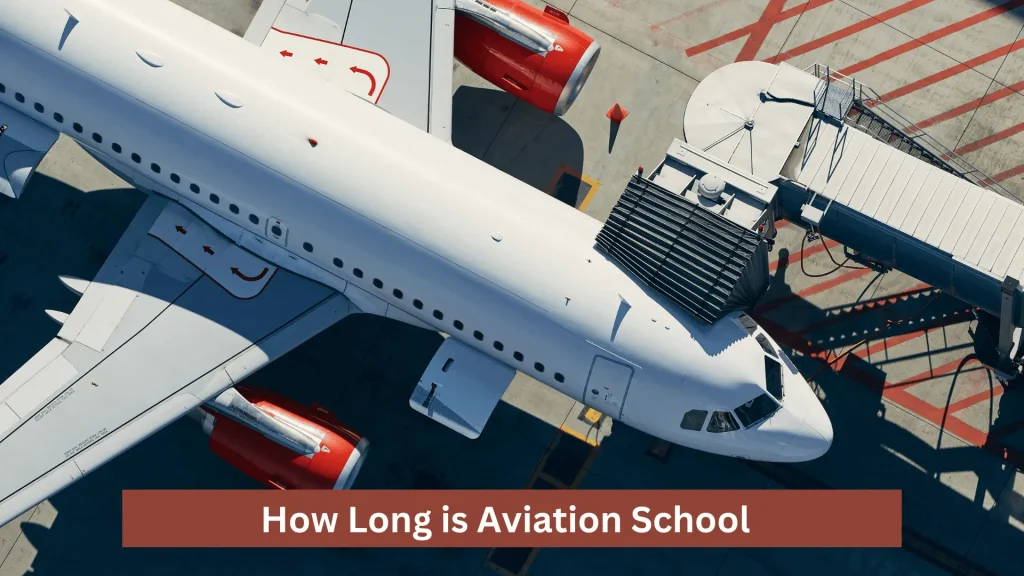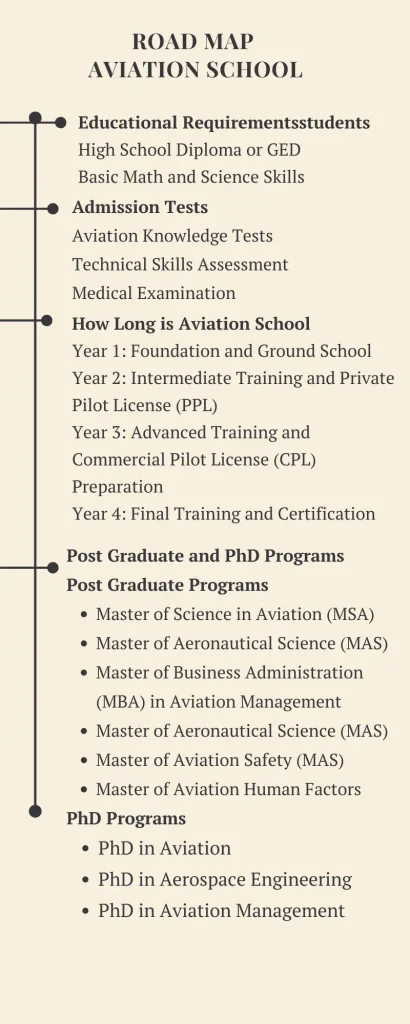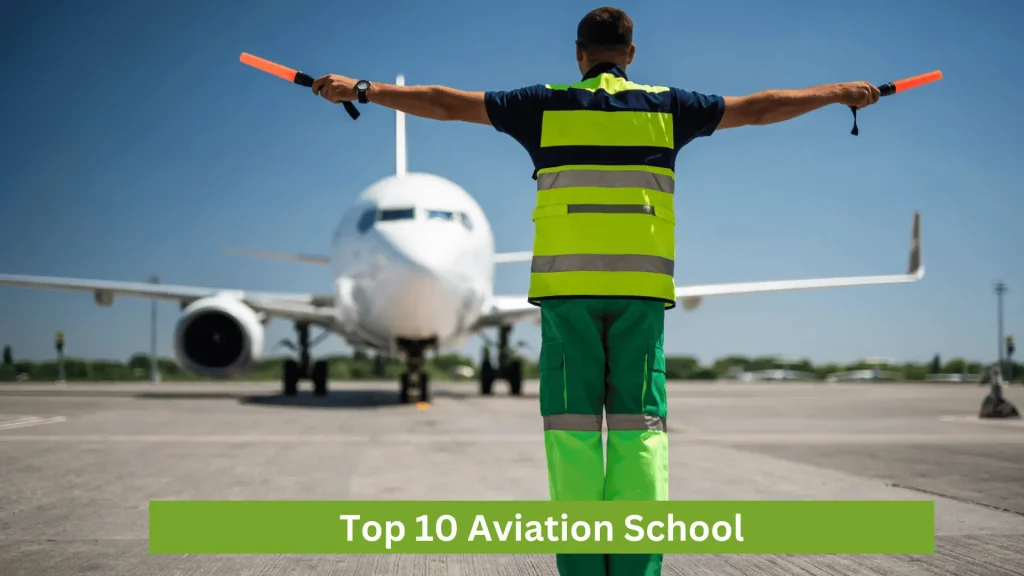How Long is Aviation School
How long is aviation school? The duration of aviation school typically varies based on the program type and certification sought. On average, it can take anywhere from 6 months to 2 years to complete, including both ground school and flight training, depending on whether you aim for a private or commercial pilot license.
What is Aviation School
Aviation school is an educational institution dedicated to training individuals in the field of aviation. These schools offer comprehensive programs that cover both theoretical and practical aspects of flying. Students learn about aerodynamics, navigation, meteorology, and aviation regulations, along with hands-on flight training under the guidance of experienced instructors.

Graduates of aviation schools are prepared to pursue various careers in aviation, including becoming commercial pilots, flight instructors, or air traffic controllers. The curriculum is designed to ensure that students meet the required standards for obtaining different types of pilot licenses, such as private, commercial, or airline transport pilot licenses, depending on their career goals.
How Long is Aviation School
Year 1: Foundation and Ground School
- Introduction to Aviation: Students begin with an overview of aviation history, basic principles of flight, and aviation terminology.
- Basic Aerodynamics: Fundamental concepts of how aircraft fly, including lift, thrust, drag, and weight.
- Meteorology: Introduction to weather patterns, forecasting, and how weather affects flight.
- Ground School: Preparation for the Private Pilot License (PPL) theory exam, covering regulations, flight planning, and navigation.
Year 2: Intermediate Training and Private Pilot License (PPL)
- Flight Training: Initial hands-on flight experience with dual and solo flights, focusing on basic maneuvers, takeoffs, and landings.
- Advanced Ground School: In-depth study of navigation, aviation law, and human factors in aviation.
- Private Pilot License (PPL): Completion of required flight hours and passing the PPL exam, allowing students to fly as private pilots.
Year 3: Advanced Training and Commercial Pilot License (CPL) Preparation
- Instrument Rating: Training on flying in various weather conditions using aircraft instruments.
- Advanced Aerodynamics and Aircraft Systems: Detailed study of complex aircraft systems and advanced flight dynamics.
- Commercial Pilot License (CPL) Ground School: Preparation for the CPL theory exam, including advanced navigation, flight planning, and aviation safety.
Year 4: Final Training and Certification
- Flight Hours Accumulation: Building required flight hours for CPL, including cross-country flights and night flying.
- Multi-Engine Rating: Training on flying aircraft with multiple engines, if included in the program.
- Commercial Pilot License (CPL): Completion of required flight hours, passing the CPL exam, and obtaining the commercial pilot license.
- Electives and Specializations: Optional courses in areas such as air traffic control, aviation management, or specific aircraft types.

How to Enter Aviation School
Educational Requirements
- High School Diploma or Equivalent: Most aviation schools require applicants to have completed high school or obtained a GED.
- Math and Science Proficiency: Strong foundation in mathematics (especially algebra and physics) and science is often preferred.
- English Proficiency: Proficiency in English is necessary as aviation terminology and communication are primarily in English.
Entry Tests
- Aviation Knowledge Tests: Some schools may require applicants to take specific tests to assess their basic knowledge of aviation concepts.
- Medical Examination: A medical certificate from an aviation medical examiner is often required to ensure physical and mental fitness for flight training.
- English Language Tests: For non-native speakers, tests such as TOEFL or IELTS may be required to demonstrate English proficiency.
Application Process
- Research and Choose a School: Identify aviation schools that match your career goals, location preferences, and budget.
- Application Form: Complete the school’s application form, which can usually be found on their official website.
- Submit Transcripts: Provide high school or college transcripts as part of the application.
- Letters of Recommendation: Obtain letters of recommendation from teachers, employers, or mentors who can attest to your capabilities and character.
- Personal Statement: Write a personal statement outlining your passion for aviation, career goals, and reasons for choosing the specific school.
- Interview: Some schools may require an interview (in-person or online) as part of the selection process.
- Application Fee: Pay the required application fee, if applicable.
Financial Aids
- Scholarships: Many aviation schools offer scholarships based on academic merit, financial need, or specific criteria related to aviation.
- Grants: Government grants or private grants may be available to help cover the cost of tuition and training.
- Student Loans: Federal or private student loans can be an option to finance your education.
- Work-Study Programs: Some schools offer work-study programs that allow students to work part-time while studying to offset costs.
- Military Benefits: Veterans or active-duty military personnel may be eligible for educational benefits such as the GI Bill.
- Employer Sponsorships: Certain airlines or aviation companies may sponsor students in exchange for a commitment to work for them after graduation.
Post Graduate and PhD Programs for Aviation School
Post Graduate Programs
Master of Science in Aviation (MSA)
Specializations: Aviation Management, Aeronautics, Aviation Safety, Aviation Human Factors
Duration: Typically 1-2 years
Curriculum: Advanced study of aviation operations, management principles, safety protocols, and human factors in aviation.
Master of Business Administration (MBA) in Aviation Management
Specializations: Airline Management, Airport Management, Aviation Finance
Duration: Typically 1-2 years
Curriculum: Combines core business principles with specialized aviation management courses, focusing on the unique challenges of managing aviation businesses.
Master of Aeronautical Science (MAS)
Specializations: Aeronautics, Aviation Education, Aviation Safety Systems
Duration: Typically 1-2 years
Curriculum: In-depth study of aeronautical science, aviation education methods, and safety management systems in aviation.
Master of Aviation Safety (MAS)
Duration: Typically 1-2 years
Curriculum: Focuses on aviation safety protocols, risk management, accident investigation, and safety program development.
Master of Aviation Human Factors
Duration: Typically 1-2 years
Curriculum: Studies human performance in aviation, human error analysis, cockpit resource management, and ergonomic design in aviation systems.
PhD Programs
PhD in Aviation
Specializations: Aviation Safety, Aviation Human Factors, Aviation Management, Aerospace Engineering
Duration: Typically 3-5 years
Curriculum: Advanced research in aviation topics, dissertation work, and contributions to aviation knowledge through original research.
PhD in Aerospace Engineering
Specializations: Aerodynamics, Aircraft Design, Propulsion, Aerospace Materials
Duration: Typically 3-5 years
Curriculum: Extensive research in aerospace engineering principles, development of new technologies, and dissertation focused on solving complex aerospace challenges.
PhD in Aviation Management
Specializations: Airline Operations, Airport Management, Aviation Economics, Aviation Policy
Duration: Typically 3-5 years
Curriculum: Research-driven program focusing on advanced management theories, economic analysis, policy development, and strategic planning in aviation.
PhD in Aviation Safety and Security
Duration: Typically 3-5 years
Curriculum: Intensive study of safety and security measures in aviation, risk assessment, threat management, and development of safety protocols.
Top 10 Aviation Schools

Embry-Riddle Aeronautical University (USA)
Location: Daytona Beach, Florida, and Prescott, Arizona
Programs: Comprehensive undergraduate and graduate programs in aeronautics, aerospace engineering, aviation management, and aviation safety.
Highlights: Known for its specialized aviation programs, extensive research facilities, and strong industry connections.
Purdue University (USA)
Location: West Lafayette, Indiana
Programs: Offers degrees in aviation technology, professional flight, and aviation management.
Highlights: Known for its cutting-edge research in aerospace technology and strong emphasis on practical training.
University of North Dakota (USA)
Location: Grand Forks, North Dakota
Programs: Aviation management, commercial aviation, aviation technology management.
Highlights: Extensive flight training program, state-of-the-art simulators, and a large fleet of training aircraft.
Cranfield University (UK)
Location: Cranfield, England
Programs: Aerospace engineering, aviation safety, and airport planning and management.
Highlights: Renowned for its postgraduate programs and research in aviation safety and aerospace engineering.
California Institute of Technology (Caltech) (USA)
Location: Pasadena, California
Programs: Aerospace engineering.
Highlights: Strong emphasis on research, cutting-edge technology, and collaboration with industry leaders.
Massachusetts Institute of Technology (MIT) (USA)
Location: Cambridge, Massachusetts
Programs: Aeronautics and astronautics, aerospace engineering.
Highlights: Leading research in aerospace technology, advanced engineering programs, and strong industry partnerships.
RMIT University (Australia)
Location: Melbourne, Victoria
Programs: Aviation management, aerospace engineering, professional piloting.
Highlights: Comprehensive aviation programs with a strong focus on industry connections and practical training.
Ohio State University (USA)
Location: Columbus, Ohio
Programs: Aviation management, aviation engineering.
Highlights: Diverse aviation programs, strong research facilities, and extensive flight training opportunities.
University of Southern California (USC) (USA)
Location: Los Angeles, California
Programs: Aerospace engineering, aviation safety.
Highlights: Strong emphasis on aviation safety, advanced research programs, and collaborations with industry experts.
Florida Institute of Technology (USA)
Location: Melbourne, Florida
Programs: Aviation management, aerospace engineering, flight training.
Highlights: Comprehensive flight training programs, strong industry connections, and focus on aviation technology and management.
Factors Affecting the Length of Aviation School
1. Type of Program and Certification
Private Pilot License (PPL):
- Typically takes 3-6 months to complete.
- Involves around 40-60 flight hours.
Commercial Pilot License (CPL):
- Generally requires 1-2 years.
- Involves around 190-250 flight hours, depending on country regulations.
Bachelor’s Degree in Aviation:
- Typically takes 4 years.
- Combines academic coursework with flight training.
2. Type of Flight School
Part 61 Flight Schools (USA):
- Flexible training schedule.
- Often takes longer due to less structured programs.
Part 141 Flight Schools (USA):
- Structured curriculum approved by the FAA.
- Typically faster due to intensive and structured training.
3. Weather and Location
- Training in areas with frequent good weather conditions (e.g., Florida, Arizona) can reduce delays and expedite training.
- Training in areas with poor weather conditions (e.g., frequent rain, snow) can cause delays, extending the training period.
4. Student Availability and Commitment
Full-Time vs. Part-Time Training:
- Full-time students can complete programs faster.
- Part-time students, balancing work or other commitments, may take longer to complete their training.
Frequency of Lessons:
Regular, frequent lessons can expedite skill acquisition.
Sporadic lessons may prolong the training period due to skill retention issues.
Final Verdict
The length of aviation school varies due to multiple factors including program type, training schedule, location, and regulatory requirements. Understanding these influences helps prospective students plan effectively and navigate their educational journey in aviation.
FAQs
1.How long does it take to become a commercial pilot?
Typically, it takes 1-2 years to obtain a Commercial Pilot License (CPL), depending on the training schedule and program type.
2.What factors affect the duration of flight training?
Key factors include program type, school resources, student availability, weather conditions, financial resources, and regulatory requirements.
3.Do weather conditions impact aviation training?
Yes, poor weather can cause delays in flight training, extending the overall duration of aviation school.
4.Is there a difference in training duration between Part 61 and Part 141 flight schools?
Yes, Part 141 schools generally offer more structured programs, often leading to faster completion times compared to the more flexible Part 61 schools.
5.How does financial stability affect aviation school duration?
Consistent financial resources allow uninterrupted training, while financial constraints can cause pauses, lengthening the time needed to complete the program.
